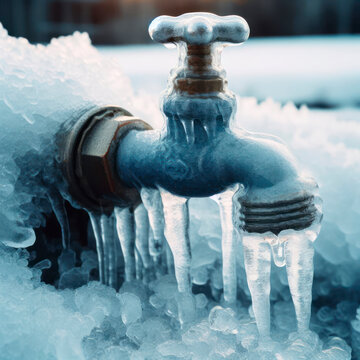Just how do you really feel in regards to Helpful Tips to Prevent Frozen Pipes this Winter?

Winter can damage your plumbing, specifically by freezing pipes. Right here's exactly how to stop it from occurring and what to do if it does.
Introduction
As temperatures drop, the threat of frozen pipelines rises, possibly causing expensive repairs and water damage. Understanding exactly how to prevent frozen pipes is essential for homeowners in cold climates.
Prevention Tips
Protecting at risk pipelines
Wrap pipelines in insulation sleeves or utilize warm tape to protect them from freezing temperature levels. Concentrate on pipelines in unheated or outside locations of the home.
Home heating techniques
Maintain interior spaces effectively heated, particularly areas with plumbing. Open up cabinet doors to allow cozy air to distribute around pipelines under sinks.
How to recognize frozen pipes
Search for decreased water flow from taps, uncommon smells or sounds from pipes, and visible frost on exposed pipes.
Long-Term Solutions
Structural modifications
Consider rerouting pipes far from exterior wall surfaces or unheated locations. Add extra insulation to attics, cellars, and crawl spaces.
Updating insulation
Invest in premium insulation for pipelines, attic rooms, and walls. Correct insulation aids preserve consistent temperature levels and lowers the danger of icy pipelines.
Securing Outside Pipes
Garden hose pipes and exterior taps
Disconnect and drain yard pipes prior to wintertime. Set up frost-proof spigots or cover outdoor faucets with insulated caps.
Understanding Frozen Pipelines
What triggers pipes to ice up?
Pipelines ice up when subjected to temperature levels below 32 ° F (0 ° C) for prolonged durations. As water inside the pipes ices up, it increases, taxing the pipeline walls and possibly creating them to break.
Risks and damages
Icy pipes can cause supply of water disturbances, residential or commercial property damages, and pricey repair work. Ruptured pipes can flooding homes and cause considerable structural damages.
Signs of Frozen Piping
Recognizing icy pipelines early can avoid them from bursting.
What to Do If Your Pipes Freeze
Immediate activities to take
If you suspect icy pipelines, maintain taps available to alleviate pressure as the ice melts. Make use of a hairdryer or towels taken in warm water to thaw pipelines gradually.
Conclusion
Protecting against icy pipelines requires aggressive measures and quick feedbacks. By comprehending the causes, indications, and safety nets, house owners can safeguard their pipes throughout cold weather.
5 Ways to Prevent Frozen Pipes
Drain Outdoor Faucets and Disconnect Hoses
First, close the shut-off valve that controls the flow of water in the pipe to your outdoor faucet. Then, head outside to disconnect and drain your hose and open the outdoor faucet to allow the water to completely drain out of the line. Turn off the faucet when done. Finally, head back to the shut-off valve and drain the remaining water inside the pipe into a bucket or container. Additionally, if you have a home irrigation system, you should consider hiring an expert to clear the system of water each year.
Insulate Pipes
One of the best and most cost-effective methods for preventing frozen water pipes is to wrap your pipes with insulation. This is especially important for areas in your home that aren’t exposed to heat, such as an attic. We suggest using foam sleeves, which can typically be found at your local hardware store.
Keep Heat Running at 65
Your pipes are located inside your walls, and the temperature there is much colder than the rest of the house. To prevent your pipes from freezing, The Insurance Information Institute suggests that you keep your home heated to at least 65 degrees, even when traveling. You may want to invest in smart devices that can keep an eye on the temperature in your home while you’re away.
Leave Water Dripping
Moving water — even a small trickle — can prevent ice from forming inside your pipes. When freezing temps are imminent, start a drip of water from all faucets that serve exposed pipes. Leaving a few faucets running will also help relieve pressure inside the pipes and help prevent a rupture if the water inside freezes.
Open Cupboard Doors
Warm your kitchen and bathroom pipes by opening cupboards and vanities. You should also leave your interior doors ajar to help warm air circulate evenly throughout your home.

Hopefully you enjoyed our piece on Winter Plumbing Precautions: Preventing Frozen Pipes. Many thanks for taking a few minutes to read our posting. So long as you enjoyed reading our blog post plz remember to pass it around. Thank you so much for your time spent reading it.
Call Today